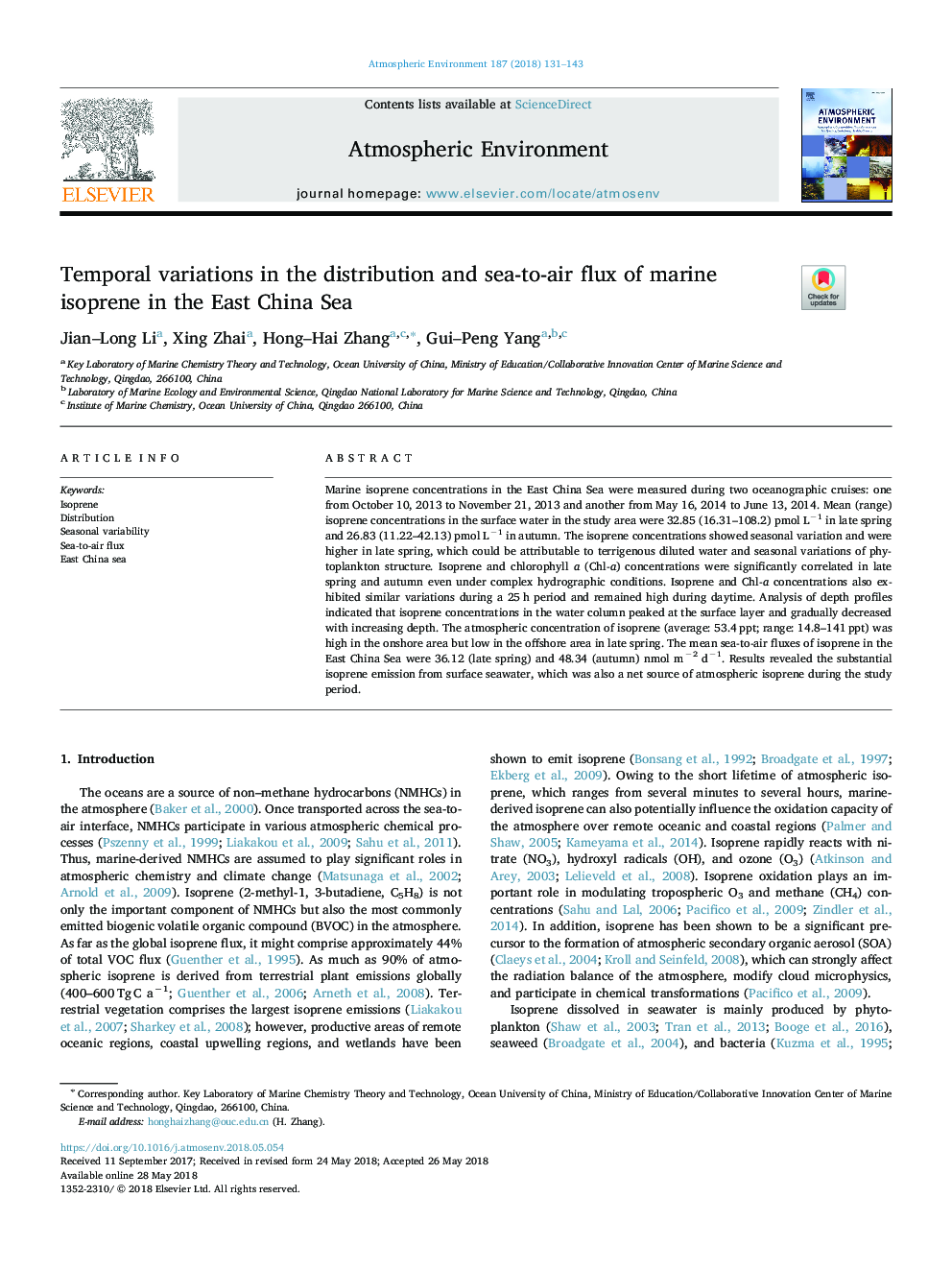| Article ID | Journal | Published Year | Pages | File Type |
|---|---|---|---|---|
| 8863609 | Atmospheric Environment | 2018 | 13 Pages |
Abstract
Marine isoprene concentrations in the East China Sea were measured during two oceanographic cruises: one from October 10, 2013 to November 21, 2013 and another from May 16, 2014 to June 13, 2014. Mean (range) isoprene concentrations in the surface water in the study area were 32.85 (16.31-108.2) pmol Lâ1 in late spring and 26.83 (11.22-42.13) pmol Lâ1 in autumn. The isoprene concentrations showed seasonal variation and were higher in late spring, which could be attributable to terrigenous diluted water and seasonal variations of phytoplankton structure. Isoprene and chlorophyll a (Chl-a) concentrations were significantly correlated in late spring and autumn even under complex hydrographic conditions. Isoprene and Chl-a concentrations also exhibited similar variations during a 25â¯h period and remained high during daytime. Analysis of depth profiles indicated that isoprene concentrations in the water column peaked at the surface layer and gradually decreased with increasing depth. The atmospheric concentration of isoprene (average: 53.4â¯ppt; range: 14.8-141â¯ppt) was high in the onshore area but low in the offshore area in late spring. The mean sea-to-air fluxes of isoprene in the East China Sea were 36.12 (late spring) and 48.34 (autumn) nmol mâ2 dâ1. Results revealed the substantial isoprene emission from surface seawater, which was also a net source of atmospheric isoprene during the study period.
Related Topics
Physical Sciences and Engineering
Earth and Planetary Sciences
Atmospheric Science
Authors
Jian-Long Li, Xing Zhai, Hong-Hai Zhang, Gui-Peng Yang,
